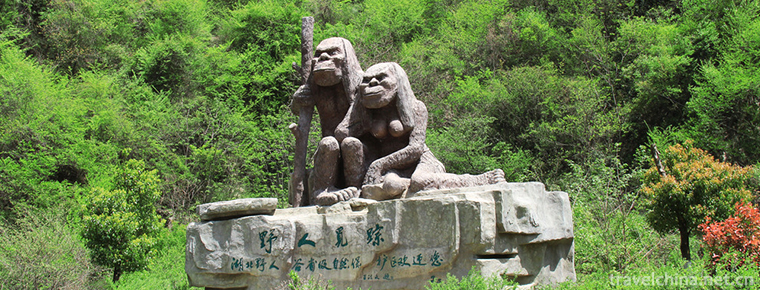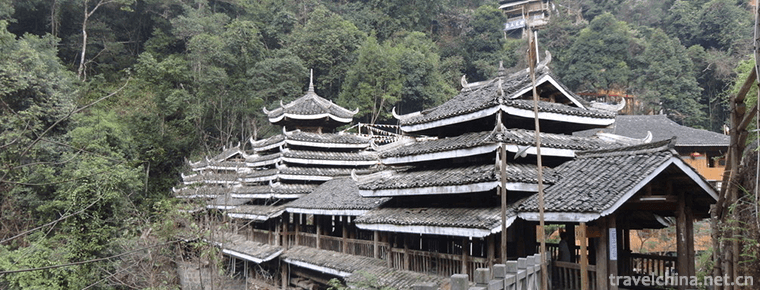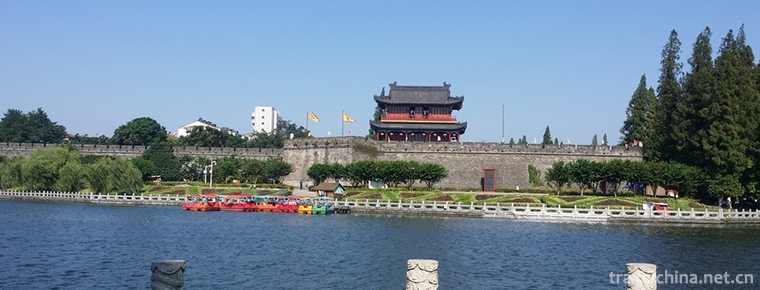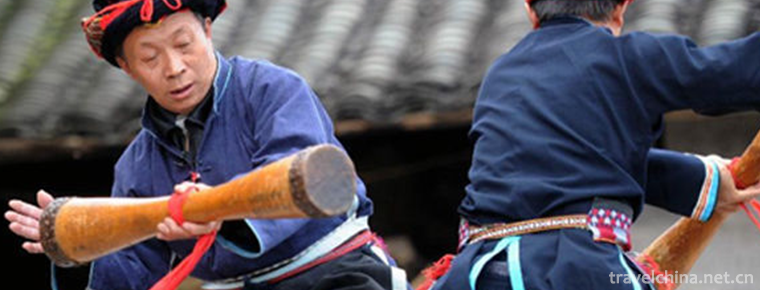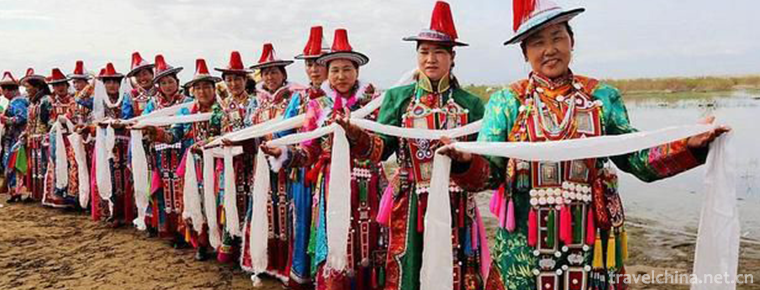Talking in North Shaanxi
Talking in North Shaanxi
North Shaanxi storytelling is mainly popular in Yan'an and Yulin in the north of Shaanxi Province. At first, poor and blind people sing some legendary stories in the folk song minor of northern Shaanxi. Later, they absorbed the melodies of Meihu, Qin Opera, Taoism and Xintianyou, and gradually formed the form of storytelling in the performance of rap and singing.
The traditional performance form of Shanbei storytelling is that the artists use the northern Shanxi pronunciation, hold three strings or Pipa to play and sing by themselves, and narrate stories alternately. The tune of Shanbei storytelling is vigorous, graceful, beautiful and changeable. It is known as "Nine tunes and Eighteen tunes". The classical operas of storytelling in northern Shaanxi include "Reunion of Liu Qiaoer", "Wang Gui and Li Xiangxiang", "Li Shuangshuang" and so on.
On May 20, 2006, the North Shaanxi stories were approved by the State Council of the People's Republic of China and included in the first batch of national intangible cultural heritage lists, numbered V-14.
Historical Evolution
origin
The origin of storytelling in northern Shaanxi is said to have originated in the slave society more than 2000 years ago and flourished in the late Qing Dynasty and the early Republic of China. It is a branch of the popular art of rap and singing in northern China, the "Three Strings Book". At first, some poor blind artists in northern Shaanxi used folk songs to tell stories, mostly to invite gods to send ghosts. Later, on the basis of Sanxianshu, they widely absorbed the tunes of Qin Opera, Meihu Opera, Xintianyou and Northern Shaanxi Daoism. They sang some legendary stories, and gradually formed a folk art with local characteristics of Northern Shaanxi.
The specific formation time of storytelling in northern Shaanxi can not be confirmed. But Zizhou, Suide, Zichang, Yanchang and other county artists inherited the accompaniment instrument Pipa from generation to generation, and the way that the artists hugged their chest crosswise and played with plucked bullets when singing, is similar to the pipa of fairies crosswise embraced in the grotto statue of Niujiazhuang Fudi Reservoir in Yijun County, northern Shaanxi, excavated in the first year of Emperor Wendi of Western Wei Dynasty (535). Historically recorded storytelling materials in northern Shaanxi originated from local chronicles of the Qing Dynasty.
In Volume 41 of Qing Dao Guangxin Ugly Qiuzhao's Yulin Fu Zhi, Yiwen Zhi, it is recorded that Chen Wendao, a colleague of Yulin Fort who knew Tan Jijin in 1670, praised Tan Fu after listening to the book: "Liu Di talked about legends and was very popular. Wen Jiangnan has Liu Jingting, who travels among the princes with this skill. Liu Di can't do it just in case, but Shao Yin is fluent and full of style. No Buddha, no worship, no worship of the south of the Yangtze River? From this we can see that there are mature artists in North Shaanxi storytelling at the latest in the reign of Kangxi in Qing Dynasty. According to Han Qixiang, a North Shaanxi storyteller, in the 1980s, his master was from the Qingdaoguang period. According to Du Xiukai, Du Xiucheng, Shi Weijun and other artists at the same time, by the end of the Qing Dynasty and the beginning of the Republic of China, the influential North Shaanxi storytellers were Du Weixin of Mizhi County, Yang Suide County, Hao Yuke, Sun Guihai, Han Wenhua, Feng Mingshan of Jingbian County and so on.
Prosperous
During the period of the Republic of China, with the increasing number of artists, storytelling activities became more and more frequent, and a custom of peace-telling books (also known as "vows") based on family letters, village community letters and temple fairs letters gradually took shape.
After 23 years of the Republic of China (1934), along with the continuous expansion and development of the revolutionary struggle in northern Shaanxi, Shanbei storytellers Gao Weiwang and Chang Shuren actively devoted themselves to the revolution, publicizing the revolutionary ideas with their new books "Keeping up with the old Liu Nao Revolution" and "The local tyrants and evil gentry will be overthrown". Gao Weiwang, an artist from Mizhi County, also participated in the Communist Party of China in the 23 years of the Republic of China. Accordingly, he set up a storytelling class to sing new songs such as "Good Red Army".
In May 1942, Mao Zedong's Speech at the Yan'an Literature and Art Symposium was published, which had a direct impact on the development of storytelling in northern Shaanxi. In April of the thirty-fourth year of the Republic of China, the Shaanxi-Gansu-Ningxia Border Region Literary Association set up a storytelling group. Under the guidance of Wang Zongyuan, Kelan, Wang Lin, Cheng Shirong, Gao Minfu and other professionals, artist Han Qixiang created and performed new books such as "Anti-Witchcraft God", "Second-class Shift", "Wang Piqin Walking South Road" and "Zhang Yulan Participating in the Election Conference". Shortly afterwards, the North Shaanxi Storytelling Improvement Association was established. Lin Shan was the director. In addition to Gao Minfu and Wang Zongyuan, the participants also included artists Han Qixiang, He Huimao and Lu Jiaxiang. Subsequently, eight training courses were held in Yan'an, Suide, Mizhi, Qingjian, Yanchuan and Yanchang. In August of the thirty-fifth year of the Republic of China, under the leadership of Wang Zongyuan, Han Qixiang, a blind artist, went to Yangjialing and Zaoyuan in Yan'an successively to rap and sing his new book Current Affairs Biography (compiled with Wang Zongyuan), Zhang Yulan's Election Meeting, Sicha Pickup Letter, Anti-witch God and Liu Qiaoer's Reunion for the leaders of Mao Zedong and Zhude of the CPC Central Committee.
From 1397 to 1949, with the attention of the border government, artists such as Han Qixiang, Shi Weijun, Xie Mingyi and Feng Mingshan went deep into the front line to console soldiers and propagate the war of liberation through storytelling.
After the founding of the People's Republic of China, storytelling in northern Shaanxi has attracted the attention of the government and made new progress. Most counties in northern Shaanxi have set up propaganda teams for storytellers. Some County Cultural libraries also organize specialists to sort out traditional bibliographies, carry out the creation and promotion of new bibliographies, and actively select and train young artists.
From 1953 to 1966, four training courses on new books of theory were held in Yan'an area, and more than 150 artists were trained.
In 1957, the Quyi group led by Yan'an County Cultural Museum was transformed into Quyi Museum, and then a fixed bookshed tea house was set up in the free market of the city. Play
In 1962, Zhang Chonghua, a blind artist from Baijiajun Village, Suide County, improved his accompaniment style by fixing eight percussion instruments, such as drums, horse gongs, cymbals, water, bangles, wooden fish, gongs and waking wood, on a shelf, holding three strings, gloves, grasshoppers, legs tied with boards, whistles around the neck and holding 13 instruments by one person, so that the accompaniment performance had the effect of a small band.
weak
Since the beginning of the "Cultural Revolution" in 1966, storytelling in northern Shaanxi was banned as the "Four Old Ages". Famous artists such as Han Qixiang and Shi Weijun were criticized, and storytelling activities in northern Shaanxi disappeared once.
Development
Since 1971, storytelling activities in northern Shaanxi have been revived one after another. Suide, Hengshan, Jingbian, Zizhou and other county cultural centers have transplanted and adapted modern Peking Opera such as "Taking Weihu Mountain by Wisdom", "Attacking White Tiger Troupe" and "White Hair Nurse" into new words, focusing on the training of artists.
The ten years after 1975 witnessed the rapid development of storytelling in northern Shaanxi. In addition to Shenmu and Fugu, ten counties in Yulin have established blind propaganda teams (also known as "storytelling teams"). Yan'an, Ganquan, Zichang, Yanchuan, Ansai and other counties in Yan'an area have also set up a quyi propaganda team. The total number of artists is more than 300, the vast majority of them are blind. Among them, the storytelling teams in Qingjian, Yulin and Jingbian counties also absorb the participation of female blind artists.
In 1975, the Quyi Museum in Yan'an was established. Six educated and bright-eyed male and female students were enrolled. The bibliographies of performance study included Liu Qiaoer's Reunion, Zhang Yulan's Participation in the Election Meeting, Four Forks Pickup Book and Looking at the Bridge, which were compiled by Han Qixiang.
In 1975, Yulin held a seminar on the reform of folk music, folk art and dance in northern Shaanxi, followed by a new performance conference.
In April 1978, Yulin held a regional training course for the skeleton of storytelling artists in Hengshan County. Under the guidance of Han Qixiang, he studied the new bibliography "Three Pairs of White Bone Spirits", "Wolf Fighting" and "Passing Families". Han Qi made a report on how to be a noble new artist with his own experience, which was warmly welcomed by the students. After half a month's training, more than 40 artists attended the meeting were educated and improved in ideology and art, which played a positive role in promoting the regional storytelling activities. After the meeting, counties held training courses on "Being a New Man, Talking about New Books". Yulin, Yan'an, Suide, Hengshan, Yanchuan and other County Cultural Museum cadres and artists create and perform together.
From 1982 to 1985, Ganquan County Quyi Team Zhang Jungong, Zhang Heping and Equity performed a cassette tape of Shanbei Shushu Bibliography. Through the production of people's inquiry, the circulation is almost all over the towns and villages of northern Shaanxi.
Revival
Due to the wide distribution of storytelling in northern Shaanxi, as well as the influence of geographical environment, living customs, dialect pronunciation, teacher-student relationship and so on, many kinds of rap styles were formed in northern Shaanxi in the 1980s.
As of 2014, there are folk storytelling clubs in all counties of northern Shaanxi, with a total of more than 1,000 artists. Many healthy young people have joined the storytelling team.
Classic repertoire
North Shaanxi storytelling can be divided into traditional books and modern books. There are more than 200 bibliographies of traditional storytelling, including The Story of Flowers and Willows, The Story of Shoes, The Story of Stolen Shoes, The Story of the Golden Bracelet, The Story of the Yellow Eagle, The Story of the White Golden Eagle, The Story of the Golden Bell, The Story of Wanhua Mountain, The Introduction to the Opera, The Bringing Book of Four Chapters, The Juxian Tower, The Carved Antelope Fan and The Story of Watching Lanterns, etc. There are more than 300 bibli The contents of traditional books are mainly bibliographies reflecting ancient myths, biographies of historical figures, heroes fighting against injustices, recruiting girls in public, treacherous ministers and betraying loyalty. The contents of modern new books are bibliographies reflecting modern people's struggle and life topics, such as "reunion of Liu Qiaoer", "Wang Gui and Li Xiangxiang", "Li Shuangshuang", "Zhang Yulan's Election Meeting", "Turning over", "Giving Golden Plaque", "Seeing Bridge", "Three Kins", "Half Bowl Luan Chromium", "Niu Lao Han Ren Xian", "Yan'an Old Man Entering Beijing", "Trial". Records, etc.
Epidemic areas
North Shaanxi storytelling is mainly popular in Yan'an and Yulin in northern Shaanxi Province.
Inheritance and Protection
Current situation of circulation
Since the reform and opening up, with the improvement of people's material living standards, the disappearance of storytelling skills, and the gradual death of storytellers, the development of storytelling in northern Shaanxi has fallen into a predicament, and there is no successor in the art inheritance, which urgently needs support and protection.
protective measures
Since 2011, the Yan'an Museum of Quyi, where Han Yinglian is located, has begun a comprehensive survey of storytelling in northern Shaanxi, collecting old (blind) artists and representative storytellers, and collecting more than 200 storytelling tracks. As of 2017, nine sessions of North Shaanxi storytelling training courses and classical book segment exhibitions have been held in succession, and more than 1800 folk storytellers have been trained.
In April 2018, Hengshan District, Yulin City, Shaanxi Province, was named "Town of Chinese Quyi" by the Chinese Quyi Artists Association. Hengshan Shushu has become a local cultural card of Hengshan, which protects the northern Shaanxi Shushu to a greater extent.
representative figure
Han Qixiang (1915-1989) was born in Hengshan County and emigrated to Yan'an in 1940. Sanxian storyteller, folk opera artist. Blind from childhood, 13 years old, he learned art storytelling, inherited the tradition of North Shaanxi storytelling, bold innovation in art, so that North Shaanxi storytelling carried forward. Since 1944, he has compiled and performed 534 albums with more than 2 million words. His works are rich in language, vivid in plot, distinctive in local color and folk literature. He has performed for Mao Zedong and other leaders of the CPC Central Committee. His representative works include Zhang Yulan's Election, Current Events Biography, Liu Qiao's Reunion and Turnover. Published in People's Literature or by Sanlian Bookstore and Popular Book Publishing House. He has been the Director of Northwest Quyi Improvement Association, Vice-Chairman of China Quyi Research Association, Vice-Chairman and Consultant of China Quyi Artists Association, Member of the All-China Literary Federation and Member of the Fifth and Sixth CPPCC National Committee. On August 6, 1989, he died of illness in Yan'an.
Selected as a non-survivor
On May 20, 2006, the North Shaanxi stories were approved by the State Council of the People's Republic of China to be included in the first batch of national intangible cultural heritage lists.
The Value of Quyi
Northern Shaanxi has a long history of storytelling. On the thick loess of northern Shaanxi, it has been plucked from the distant past to the present. Blind calligraphers have traveled all over Dachuan Avenue in northern Shaanxi to console the souls of people in this poor and blocked land with its unique rhyme.
Honorary recognition
In 1952, at the Shaanxi Creation Conference, Han Qixiang's "Liu Qiao Reunion" won the first prize.
In 1953, Han Qixiang's "Liu Qiao Reunion" won the first prize of the Ministry of Culture at the national music and dance performance.
Cultural anecdotes
Legend has it that long ago, an old man gave birth to three sons. When he grew up, he became a slave and drove animals. His eldest son was called Rhubarb. He told the slave owner to cut off one hand. His second son Erhuang's leg was broken. His third son Sanhuang made the master blind, and his three brothers fled to Qinghua County in northern Shaanxi to beg for a living. One day, rhubarb picked up two pieces of rotten wood, knocked on the board and begged along the door, saying some lucky words. The owner gave them some remnants of soup and leftovers. Once they ate sheep, they picked up the intestines of sheep, dried them and stretched them on the board, and then they played the sound. Later, three brothers made pipa, and they cooperated with each other, playing and singing. Er Huangxin thought who would knock on the bangles after his elder brother died. He had the ingenuity to tie the two boards to his legs and beat, play and sing by himself. Later, the eldest and the second went to Linxian County, Shanxi Province, but Sanhuang stayed in northern Shaanxi. After marriage, he gave birth to five sons and passed on the skill of playing Pipa to his sons. The eldest brother received thirty-six apprentices, passed Sanxian to eighteen apprentices, set up a home in Yulin, and imparted the skills of Lotus Fall, Pipa and Sanxian to later generations. This folklore is enough to witness the long history of storytelling in northern Shaanxi.

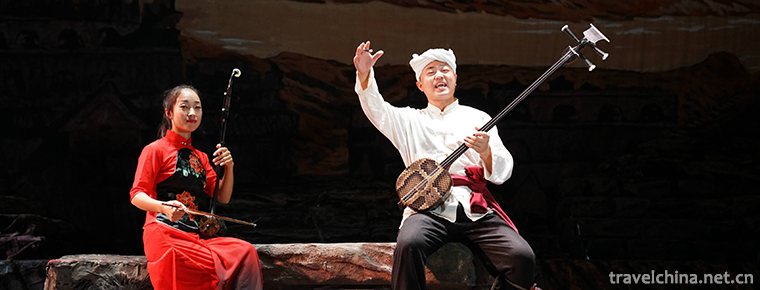
-
Shennongjia Forestry DistrictHubei Shennongjia
Shennongjia Forest District, referred to as Shennongjia for short, was established in 1970 with the approval of the State Council and directly under the jurisdiction of Hubei Province. .
Views: 234 Time 2018-10-28 -
Yellow River Estuary Ecotourism Area
The Yellow River Estuary Ecotourism Area is located in the Yellow River estuary area of Dongying City, Shandong Province. It has unique ecotourism resources of the Yellow River Delta.
Views: 151 Time 2019-01-18 -
Longsheng Hot Spring Resort
Longsheng Hot Spring is located 32 kilometers northeast of Longsheng County. It takes 40 minutes to get to Longsheng Hot Spring by bus from the county town. Hot springs are gushed from rock strata 120.
Views: 184 Time 2019-02-06 -
Hui folk instrumental music
Hui folk instrumental music is a long-term life practice and cultural activities of the Hui people in Ningxia, inheriting ancient instruments of Ningxia and northwest frontier fortress instruments and.
Views: 169 Time 2019-05-04 -
Qingyang Opera
During Jiajing period of Ming Dynasty, Yiyang Tune of Jiangxi flowed into Qingyang County of Chizhou Prefecture in Southern Anhui Province. It was combined with local language, folk opera (Kunshan Tun.
Views: 148 Time 2019-06-11 -
Legend of the Three Kingdoms
The legend of the Three Kingdoms is a kind of folk literature which was approved by the State Council and listed in the fourth batch of national intangible cultural heritage list in 2014..
Views: 213 Time 2019-06-12 -
Long Drum Dance of Yao Nationality
Chinese Yao folk dance. Popular in Guangdong, Guangxi, Hunan and other provinces where Yao people live together, most of them perform on traditional Yao festivals, harvest celebrations, relocation or .
Views: 209 Time 2019-07-11 -
Yugur Costume
Yugur costume is the traditional costume of Yugur people. Both men and women of Yugur nationality wear long gowns with high collars and large skirts. Men wear red and blue belts with waistknives, sick.
Views: 138 Time 2019-07-16 -
Gesala Ecotourism Area
Gesala eco-tourism area is located in Yankou Township, walai Township, Wenquan Township and Qinghe Township in the northwest of Yanbian County, Panzhihua City. It is located at the junction of Sichuan Province and Yunnan Province..
Views: 365 Time 2020-10-15 -
Technical requirements of Chinese embroidery
The technical requirements of embroidery are: smooth, even, flat, even and clean. Smooth refers to straight straight straight line and smooth curve; neat refers to neat pointer trace and no uneven edge; flat refers to accurate gesture, plain.
Views: 322 Time 2020-12-12 -
Historical evolution of Yibin
In the sixth year of Jianyuan (135 B.C.), Emperor Wu of Han Dynasty established Qianwei County, and at the beginning of the county administration, he (the west of Zunyi City, Guizhou Province) was established. In the first year of the first Yuan Dynasty of emperor Z.
Views: 375 Time 2020-12-18 -
Yibin landform
The topography of Yibin City is high in the southwest and low in the northeast. In the west, there are yuxu of Liangshan and Xiaoliangshan, and Laojun Mountain is the highest point of Wuzhi Mountain in Pingshan County with an altitude of 2008.7 meters;.
Views: 284 Time 2020-12-18
